Can You Use Epoxy Tables Outside?
I’ve left epoxy tables out in the rain. I’ve watched the sun bake them. I’ve even tried to ignore the little cracks that show up after a long winter. So... can you use epoxy tables outside? The answer isn’t a hard yes or no—but I’ve got some real answers from trial, error, and finally getting it right.
What Happens to Epoxy Outside?
Sunlight, Rain, and Real-World Stress
Epoxy might look like glass, but it’s not invincible. When I left my first table outside on an uncovered patio, here’s what hit it:
- UV rays started to dull and yellow the surface
- Rain crept into unsealed edges
- Humidity and dew softened the top coat just enough to cloud it up
It didn’t happen overnight—but over a season, I could see the difference. You can see what long-term wear looked like on mine in this blog.

Does It Yellow or Crack Over Time?
Cheap epoxy? Yeah. It yellows fast and can even develop spider cracks. Premium UV-stable epoxy? Holds up way better, but still benefits from shade and maintenance. Epoxy can go the distance outdoors—but it needs help.
Not All Epoxy Is Built the Same
Casting vs. Coating Resin (and Which One Holds Up Outside)
I’ve tested both types:
- Casting resin (used for deep pours like river tables): gorgeous but more vulnerable outdoors.
- Coating resin (used for surfaces): better suited for outdoor use if it’s UV-protected.
Need help choosing resin in general? I explain the difference between types in this post.
How to Check if Yours Has UV Resistance
Look for:
- Labels that say “UV resistant” or “non-yellowing”
- Ingredients like HALS (hindered amine light stabilizers)
- Epoxy marketed for bars, counters, or marine environments—those are your best bet outside

When Outdoor Use Works (and When It Doesn’t)
Covered Patio vs. Full Sun
Covered patios or sunrooms? Totally doable.
Full sun, uncovered yard? You’re playing with fire (and UV).
Even great epoxy needs protection from direct exposure.
Cold Climates, Humidity, and Rain Damage
- Freeze/thaw cycles can cause cracking or warping if moisture gets in.
- High humidity can leave the surface tacky or cloudy over time.
- Unsealed edges = water intrusion waiting to happen.
Can You Leave an Epoxy Table Out Year-Round?
You *can*—but I don’t recommend it unless:
- It’s fully sealed with a marine-grade topcoat
- You use a furniture cover
- You’re okay with recoating every year or two.
Otherwise, bring it in for the winter or treat it like a seasonal piece.

My Tips for Making Epoxy Tables Weatherproof
Sealers, Topcoats, and What Actually Helped
These saved my outdoor tables:
- UV-resistant clear coat (like Spar urethane or automotive-grade topcoats)
- Edge sealing with thin coats to stop moisture seep
- Multiple epoxy layers to strengthen the bond
If you’re sealing and finishing, I cover more tools and polish tricks in this blog on polishing.
The Best Outdoor Finishes I’ve Tried
- TotalBoat, TableTop with UV additive.
- Varathane Spar Urethane as a final layer over resin.
- Pro tip: matte finishes hide UV wear better than glossy.
Maintenance Schedule That Kept Mine Looking Good
- Monthly: Wipe with mild soap + water
- Quarterly: Check edges and reapply topcoat if needed
- Annually: Full inspection + fresh clear coat if fading or dull spots show up

Epoxy Tables for Outdoor Entertaining
Style Ideas for Outdoor Resin Tables
Some of my favorite builds:
- Ocean pour coffee tables for pool decks
- Black-and-gold epoxy end tables under pergolas
- Clear resin over driftwood slabs for boho patios
If you like these builds, check out my roundup of 10 favorite epoxy table ideas.
Serving, Drinking, and Heat Safety Outside
- Epoxy laughs at spills—but hates hot pans
- Always use trivets or serving trays
- Avoid setting candles or grills directly on the surface
I go deeper on heat protection (indoors and out) in this blog.
Using Epoxy Tables for Outdoor Kitchens and Bars
These work great when:
- You install under a covered roof or pergola
- You maintain a regular resealing schedule
- You pair epoxy with heat-tolerant stone or metal accents
What to Avoid If You're Using Epoxy Outdoors
Common Mistakes That Ruin Tables
- Skipping UV protection
- Leaving edges raw or unsealed
- Letting standing water pool on the surface
Bad Products, Poor Curing, and My Early Failures
I once used a bargain epoxy that turned yellow in two months. Another time, I poured during humid weather—ended up with microbubbles and cloudy spots. Lesson learned: prep and patience win every time.
Need help fixing early-stage issues? Here’s how I repaired damage on mine.
FAQ: Outdoor Epoxy Resin Questions
Will epoxy last outside in the sun?
Yes — but only with real UV protection. Direct sunlight breaks down standard epoxy fast. UV-stable epoxies with HALS stabilizers plus a marine-grade topcoat can handle several seasons outdoors. But fully exposed? You’re asking a lot of any resin.
How long does epoxy last outdoors?
Under a covered patio: 3-5 years before maintenance. Full sun: you might see yellowing or dulling within 1-2 years without protection. The more you protect it, the longer it lasts.
What kind of epoxy can be used outside?
Look for products labeled: UV-stable, HALS-stabilized, non-yellowing, or marine-grade. My go-to brands are EcoPoxy FlowCast, TotalBoat TableTop with UV additive, and Stone Coat UVPoxy for these builds.
Is there a difference between indoor and outdoor epoxy?
Absolutely. Most indoor-grade epoxies aren’t built to resist UV or temperature swings. Outdoor epoxies have better UV blockers, more flex, and better long-term durability when exposed to sunlight and moisture.
Best epoxy resin for outdoor use?
- EcoPoxy FlowCast (deep pours)
- Stone Coat UVPoxy (tabletops)
- TotalBoat TableTop with UV additive (good all-around)
Best outdoor epoxy resin for wood?
EcoPoxy FlowCast and Stone Coat UVPoxy have both performed well for me when used with proper topcoats. But remember — sealing your edges is just as important as the resin itself.
Best outdoor epoxy resin for concrete?
I recommend industrial concrete epoxy coatings or flexible polyurea products for most outdoor concrete. For decorative concrete tabletops, I still use UV-stable epoxies plus spar urethane for extra defense.
Outdoor epoxy resin for stone?
Similar approach: UV-stable epoxy + flexible clear topcoats help prevent cracks and yellowing on outdoor stone installations.
Best clear epoxy for outdoor use?
You’ll never get "forever clear" outside, but EcoPoxy FlowCast and TotalBoat TableTop have held up better than others I've tested, especially when sealed with UV-blocking topcoats.
Final Thoughts: Should You Use Epoxy Outdoors?
When It’s Worth It (And When It’s Not)
Worth it: Covered patios, protected decks, shaded outdoor bars.
Skip it: Unshaded yards, locations with extreme weather, anywhere you can’t monitor the surface now and then.
The Setup I Use Now
- UV-stable epoxy
- Two layers of marine-grade sealer
- Placed under a pergola
- Covered at night and during storms
It still looks brand new—three summers in.
Epoxy can absolutely be part of your outdoor space—it just can’t be left to fend for itself. When you put the same care into sealing and maintaining it as you do building it, it becomes a centerpiece that holds up to the elements and still turns heads.
Thanks for taking the time to read—I really appreciate it. I hope something in my process (or my mistakes) helps you along the way. If you want a custom piece or hit a wall building your own, feel free to drop a comment or reach out—happy to help. Have a blessed day!
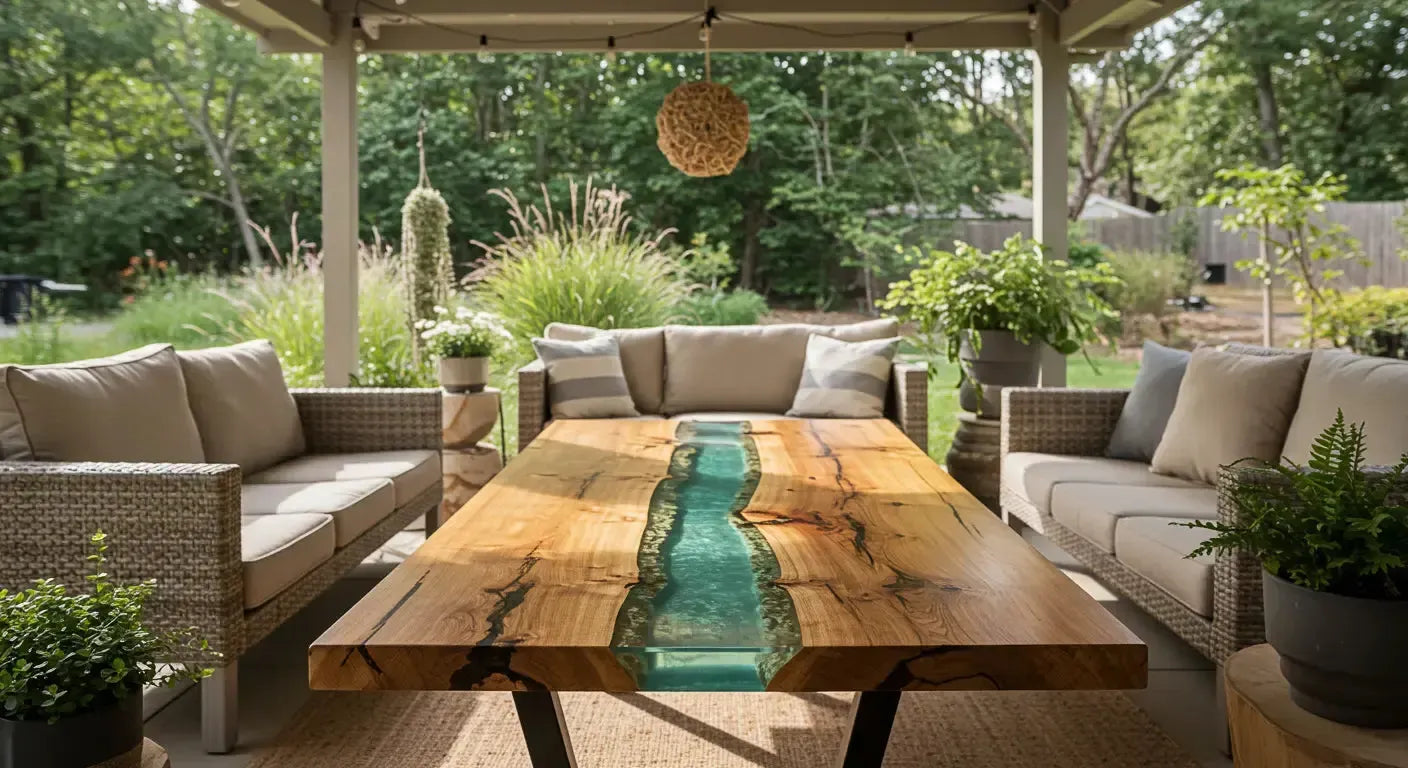
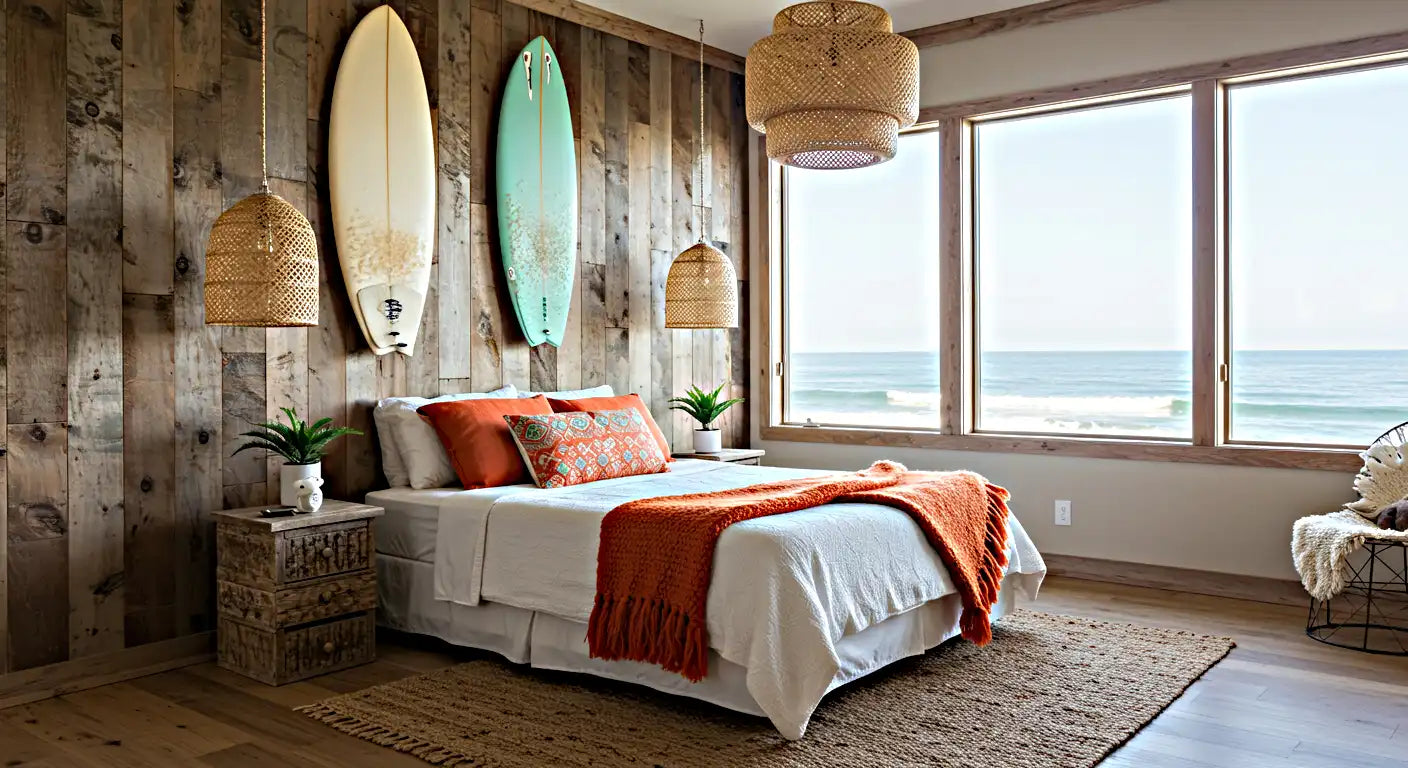
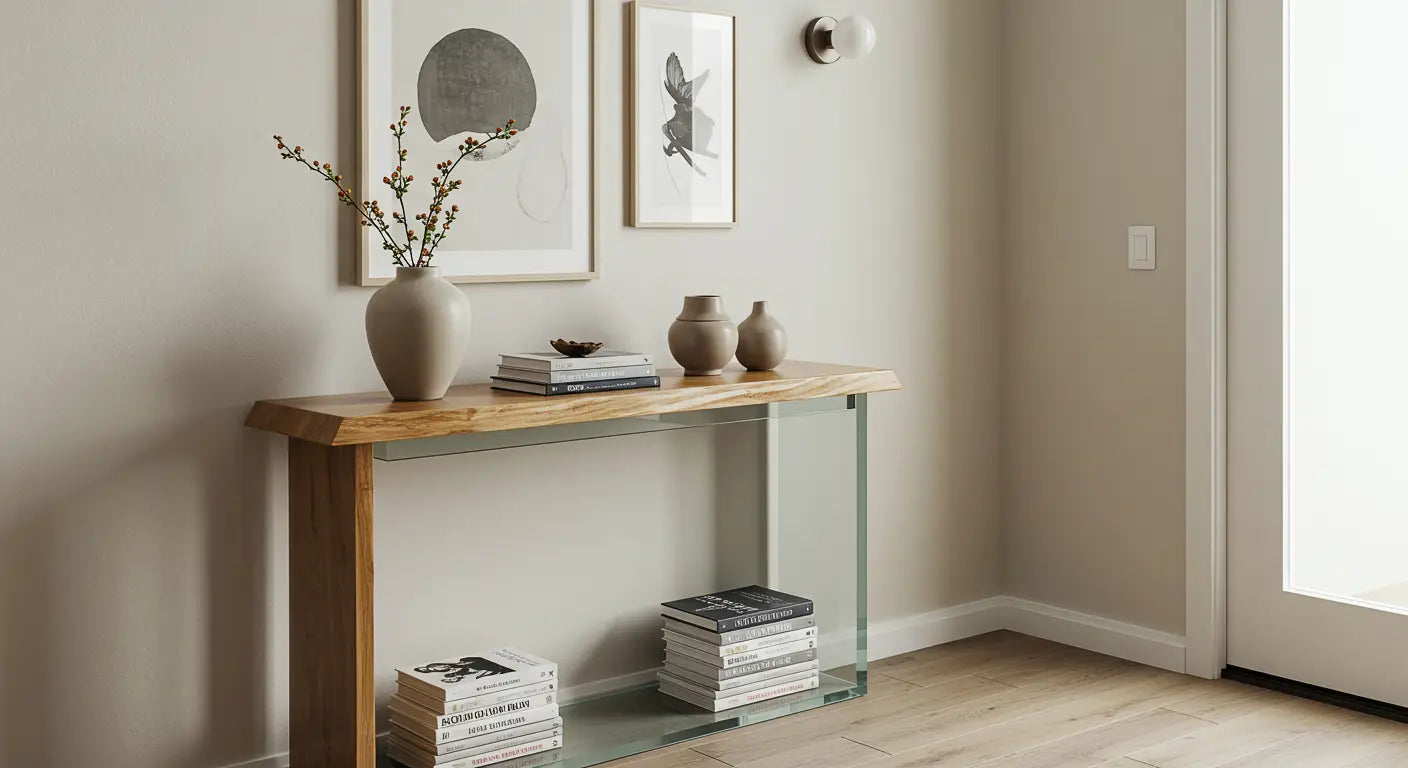
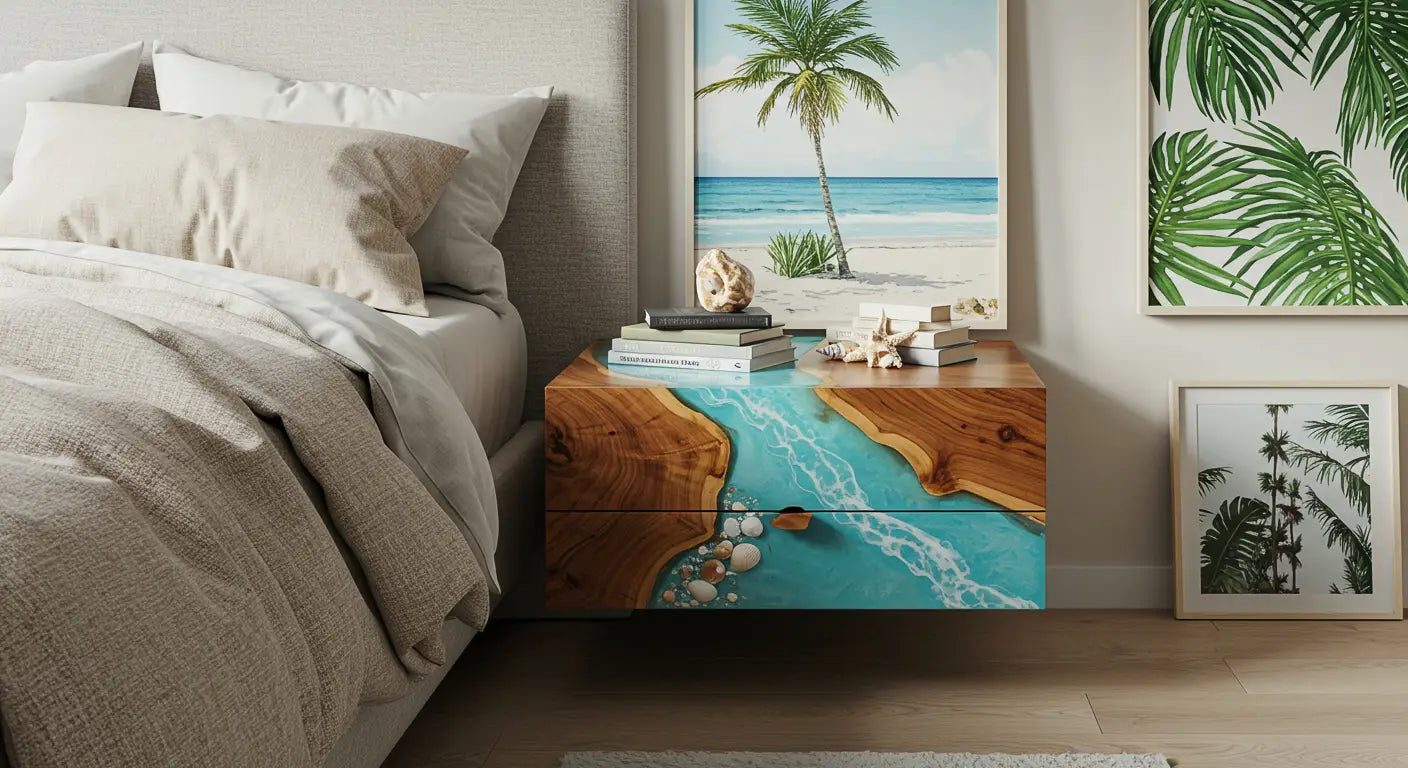
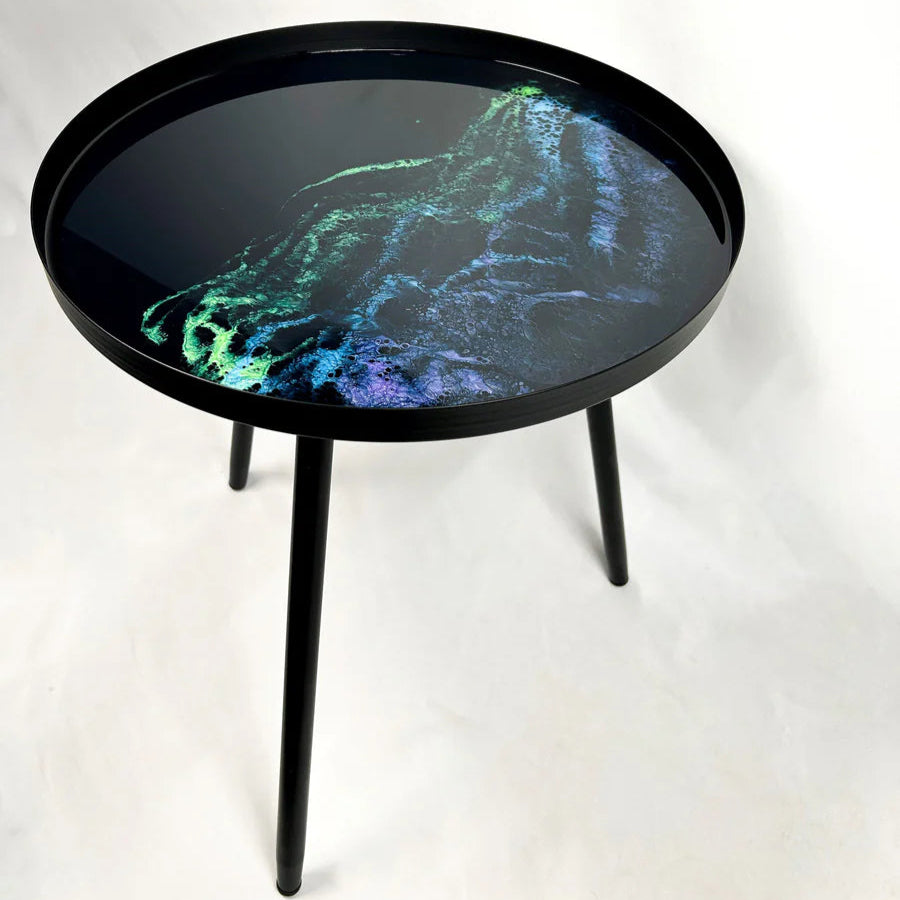
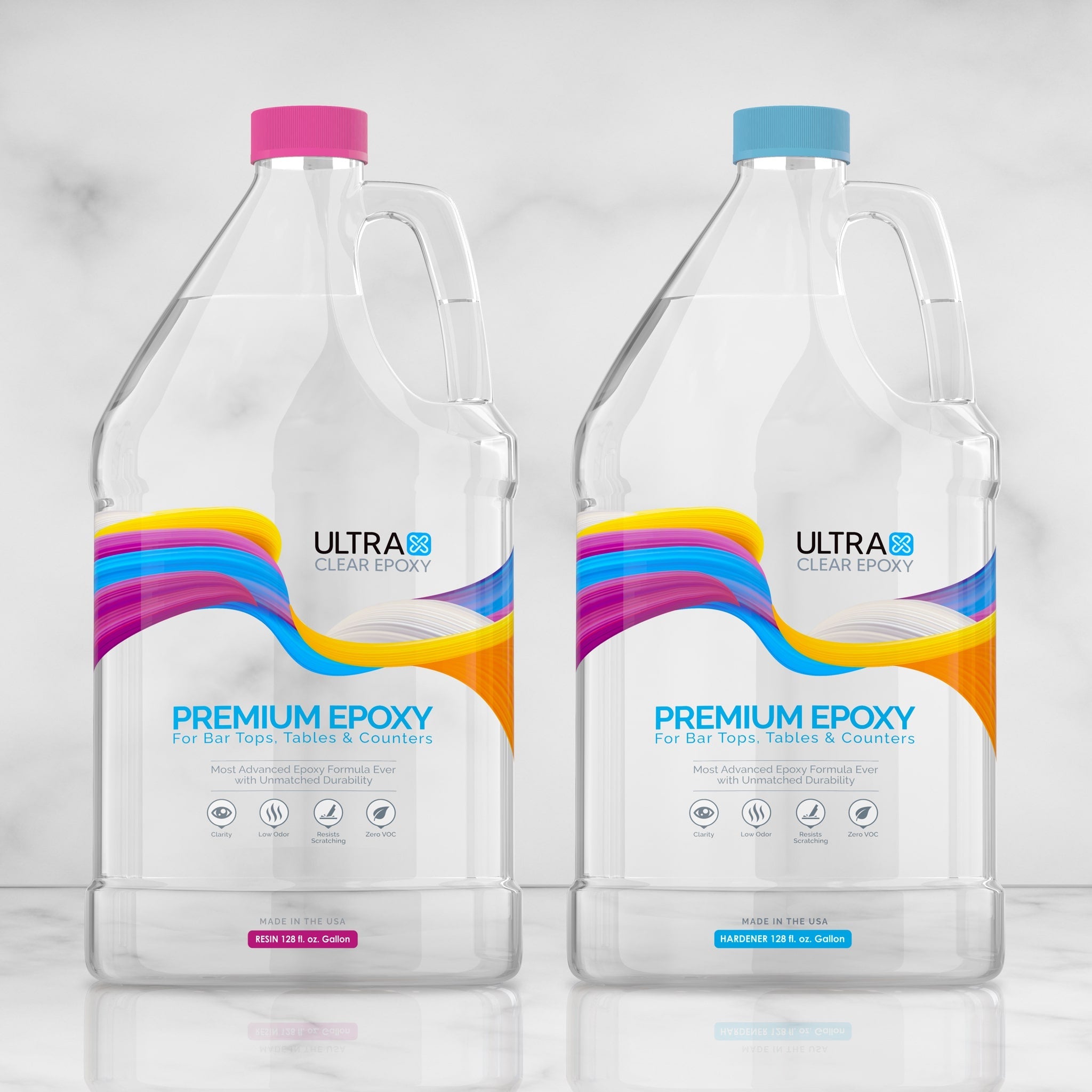
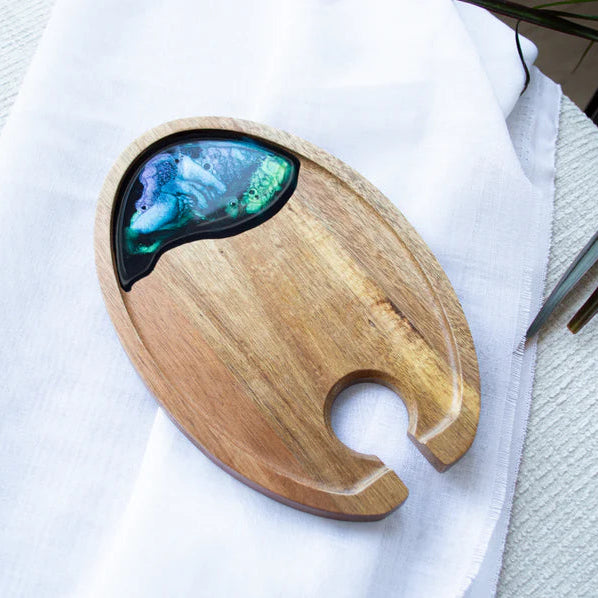
Share: